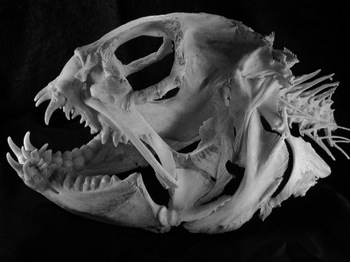
Backlist
Series: Perspectives in California Archaeology 9
ISBN: 978-1-931745-87-1
Publication Date: January 1, 2012
Price: Pb $34.95, eBook $28.00
Order this book here!
- Print: Order from our distributor
How does the practice of archaeology benefit from faunal analysis? Michael Glassow and Terry Joslin’s Exploring Methods of Faunal Analysis: Insights from California Archaeology addresses this question. Contributors to this volume demonstrate how faunal remains can be used to elucidate subsistence, settlement, technological systems, economic exchange, social organization, adaptation to variability in resource distribution and abundance, and the impacts of historic land use. The sheer prevalence of faunal remains in California archaeological sites means that most archaeologists working in the state inevitably must give these resources their close attention-and yet methodological challenges remain. The chapters in this thoughtfully edited volume tackle these challenges, providing strategies for identifying and mitigating sample bias and recommending quantitative techniques borrowed from a variety of disciplines. The volume also presents examples that illustrate the use of faunal data to test hypotheses derived from microeconomic theory, the applicability of bone and shell chemistry to faunal analysis, and the relevance of faunal data to addressing issues in biology.

Table of Contents
- Ch. 01: Introduction by Michael A. Glassow and Terry L. Joslin
- Ch. 02: Interpreting New Samples from Famous Old Sites: Mammal Remains from the 1999 Emeryville Shellmound Excavations (CA-ALA-309 and CA-ALA-310), with Comments on Fish and Birds by Thomas A. Wake
- Ch. 03: Contradictions and Complements: the Use of Geochemistry and Body Part Utility Analysis to Detect Nonlocal Procurement Strategies in Late Holocene Northern California by Deanna N. Grimstead
- Ch. 04: Mass Capture in Prehistoric Northwestern California, Energy byMaximizing Behaviors and the Tyranny of the Ethnographic Record by Adrian R. Whitaker
- Ch. 05: Subtidal Shellfish Exploitation on the California Channel Islands: Wavy Top (Lithopoma undosum) in the Middle Holocene by Jennifer E. Perry and Kristin M. Hoppa
- Ch. 06: A Native Californian’s Meal of Coho Salmon (Oncorhynchus kisutch) Has Legal Consequences for Conservation Biology by Kenneth W. Gobalet
- Ch. 07: If Mussels Weighed a Ton: Problems with Quantifying Santa Barbara Channel Archaeofaunas by Diane Gifford by Gonzalez and William R. Hildebrandt
- Ch. 08: Fragmentation, Identification, and Interpretation of Faunal Remains from Late Holocene Tecolote Canyon, Santa Barbara County, California by Torben C. Rick and Jon M. Erlandson
- Ch. 09: Hunting versus Gathering: Comparing Faunal and Artifactual Remains at CA bySMI by575NE, an 8,500-Year by Old San Miguel Island Shell Midden by Jon M. Erlandson and Todd Braje
- Ch. 10: Analytical Sampling Strategies for Marine Fish Remains: Measuring Taxonomic Diversity and Abundance in Central California Middens by Terry L. Joslin
- Ch. 11: The Identification and Explanation of Intensified Fishing Practices by Scott Pletka
- Ch. 12: Identifying Fishing Techniques from the Skeletal Remains of Fish by Ethan B. Bertrando and Dustin K. McKenzie
- Ch. 13: Sampling Issues in Evaluations of Diet and Diversity: Lessons from Diablo Canyon by Terry L. Jones and Brian F. Codding
- Ch. 14: Deer Bone Fragmentation in Coastal Southern California Prehistoric Sites by Michael A. Glassow
- Ch. 15: Issues Confronting Faunal Analysis in California by Michael A. Glassow and Terry L. Joslin
